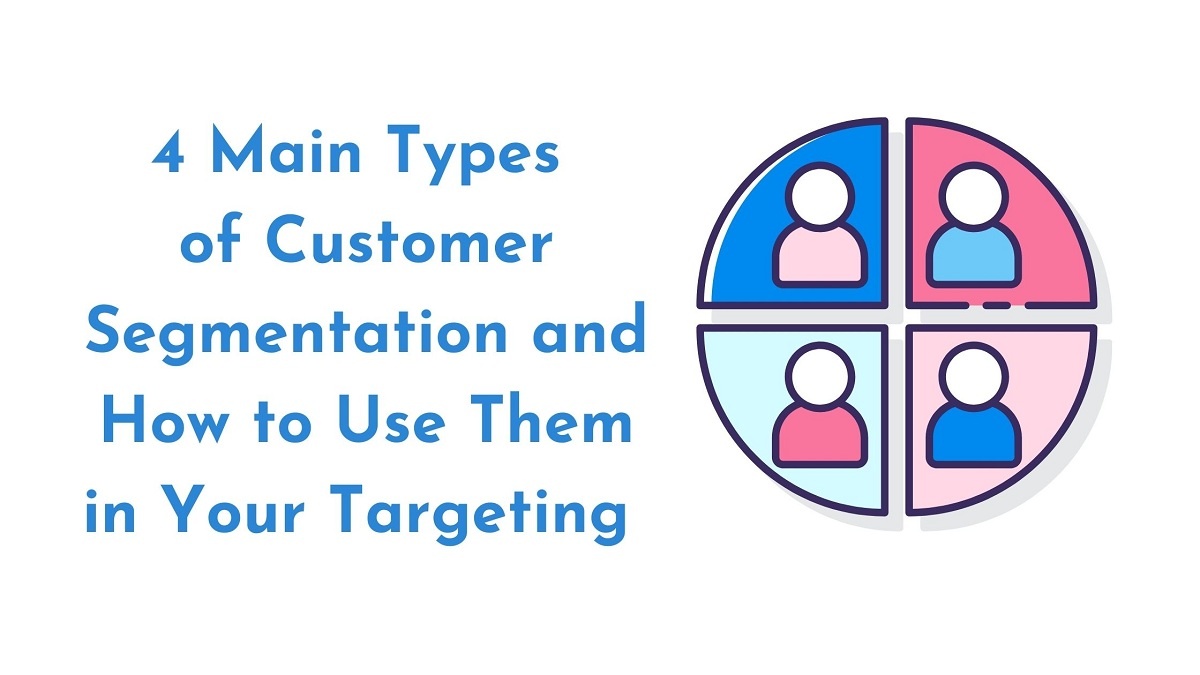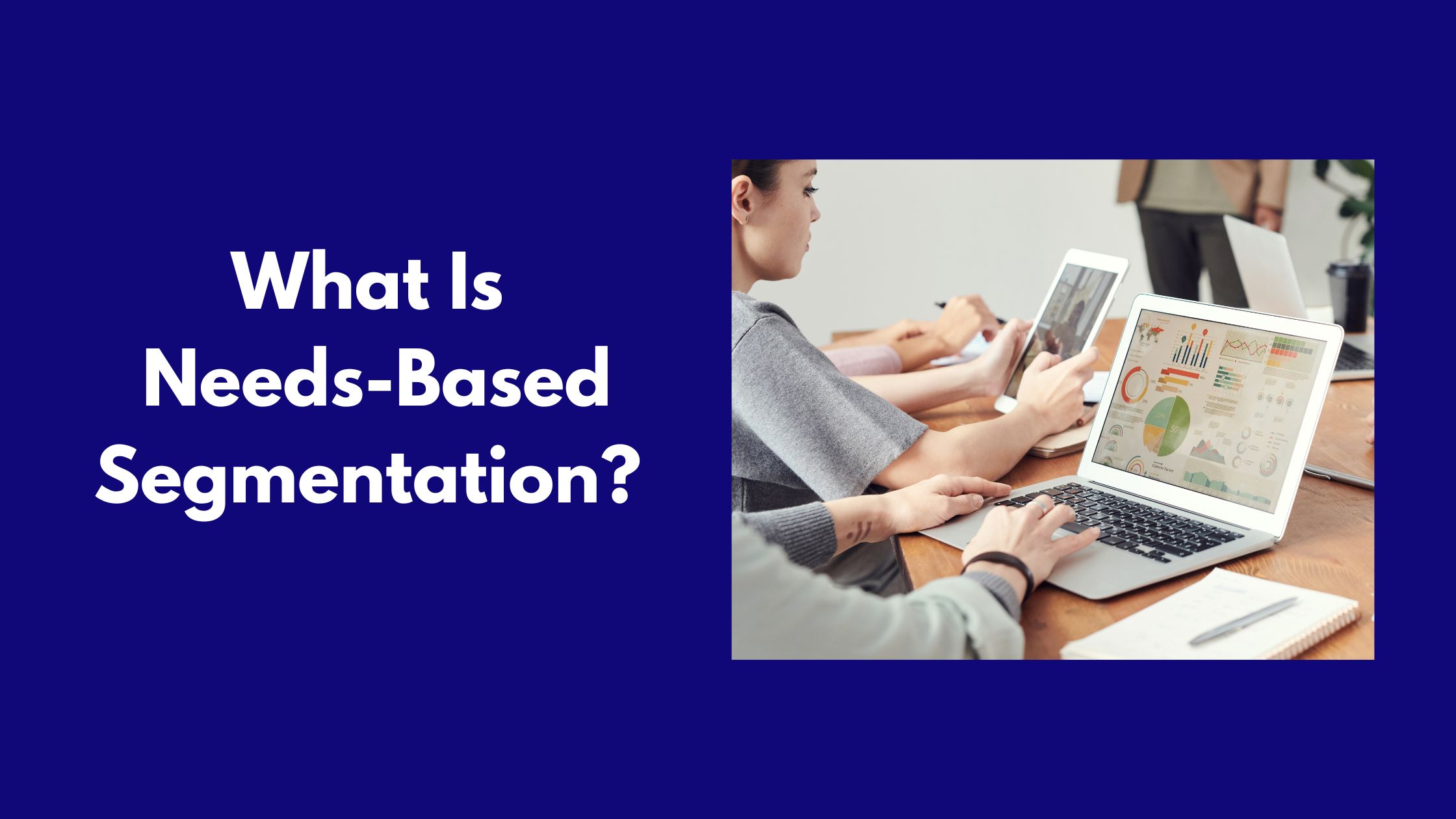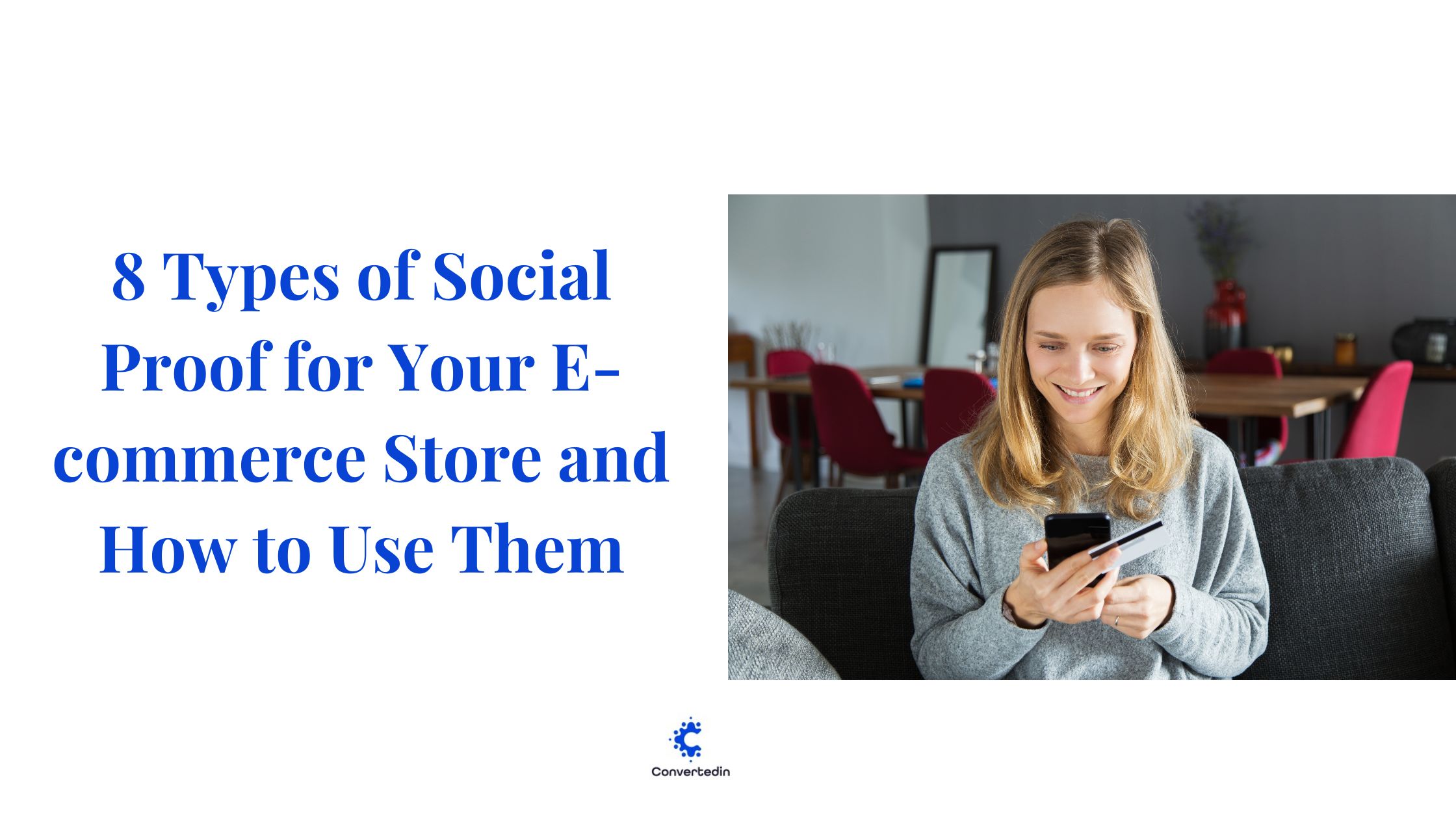13+ Types of Retail Customers and How to Deal with Them [Guide]
Whether you’re an e-commerce business or a service provider, you meet customers every day. And you’ve probably already noticed that they’re not all the same. For e-commerce businesses especially, there are different types of retail customers that buy from you and your competitors.
As a business owner or marketing manager, knowing which types of customers come to your store and how to deal with each of them is imperative to your success and growth.
Sure, some customers are a breath of fresh air, but then there are those that are a pain in the neck. There are also those customer types that you have no idea how you can turn them from people merely browsing your store to regular customers.
Understanding the different types of customers that come to your business and their pressing pain points will help you grow. It will also help you uncover the customers that mean more to your business and target them better in your ads.
In this article, we’ll tackle the 5 main types of customers in retail along with 15 broader sub-categories of customers. We’ll also talk about customer pain points and types of customer segmentation.
The main 5 types of customers in marketing
Before you look at your different retail customers, you should first have a way to identify those customers.
Whether you use a Facebook Pixel to track customers coming from your Facebook ads, or use the more generic Google Analytics to see which country your customers are from, you should have an app or tool in place so you can keep up with the source of your traffic.
You should also put your customers’ needs first – always.
A quick overview of your customers will indicate where they fall in the following 5 broad categories:
- Discount customers
- Need-based customers
- Impulse customers
- Wandering customers
- Loyal customers
1. Discount Customers
A discount customer is one that goes after the offer or discount. In other words, they’re bargain hunters. And if you don’t have products on sale, they’re not venturing into your physical or online store.
This type of customer is more interested in price rather than the product itself. If it’s on sale, they’ll look at it and think about it. If it’s not sale, it’s not on their radar.
And if your competitor is offering the same product at a better discount, they’ll go straight to them.
Discount customers are super hard to please. Especially since their rationale is revolves around the price tag. Their eyes are in search of a number along with the percentage sign and OFF in big red – or white – letters.
They may be receptive to a loss leader strategy – if you’re running one.
How to deal with discount customers
Despite being focused on price, which can hurt you profit margin, discount shoppers are considered frequent shoppers and can contribute to inventory turnover.
And while they’re highly unlikely to buy your product at its regular price, you can entice them by presenting the value you’re offering.
Show them why it’s a ‘good deal’ to get this product from you at a discount – even if that discount is slightly higher than your competition.
Do you have a loyalty program that offers them points for products they buy from you and that they can redeem later? Or maybe you have a customer support team that’s great to work with that can reel them in.
You can also turn them into loyal customers by segmenting them, adding them to a mailing list, and notifying them when you’re running a sale.
2. Need-based Customers
These customers are driven by a need, a pain point that they are trying to solve or fulfill.
In other words, they know what they need and are in search for it.
And often, this customer type has recurring needs. And should you succeed in offering them the solution to their pain, you’ll be their go-to every time their pain arises.
It’s usually hard to upsell to need-based customers. However, providing them with a great customer experience will turn them into loyal buyers.
How to deal with need-based customers
If you have a physical store, you should train your salespeople or reps to spot this type of customer quickly and give them adequate care.
If you’re an e-commerce business, it’s still possible to spot this customer type. Usually, your customer support or success team can spot them through website or social media chat or via email.
Make sure your mobile and e-commerce checkout processes are smooth, quick, and secure.
Treated well and satisfied with the service and product they’ve received, it’s easy to turn need-based customers into loyal ones.
3. Impulse Customers
An impulse customer is one who relies on their feelings when making a purchase. They see a product, they feel good about it or it makes them happy or excited, so they buy it.
How to deal with impulse customers
Impulse buyers are generally receptive to upselling – as long as you make them feel good about their purchase.
Offering a unique or exciting experience can get impulse shoppers to buy more from you. If you’re running a special event in your physical or online store, be sure to invite these impulse buyers.
To get them to complete the purchase, make sure your checkout process is fast and easy, whether online or in-store.
4. Wandering Customers
As their name suggests, wandering customers are just wandering in a mall or simply killing time online.
They don’t have anything in mind that they want to buy. They may pop in your physical or online store and may or may not buy something.
In some cases, wandering customers are on the lookout for a unique experience, if they get it, they’re likely to stay or come back later to buy something.
If you have a physical store, they may ask your sales reps random questions.
How to deal with wandering customers
Wandering customers have no purpose when they walk into a store or when they click an online ad. They see something shiny or pretty or that connects with their hobbies and they click the ad to see what else is there.
A great way to attract wandering customers is by providing a friendly experience, whether online or in-store.
Provide them with a unique experience such as product sampling. Be sure not to bother them when they’re browsing in-store.
Further reading: The Top 24 E-Commerce KPIs Every Business Needs To Know
5. Loyal Customers
This is the most important type of customer for any business, e-commerce, software as a service (SaaS), direct-to-consumer (DTC), and anything in between.
And in case you haven’t noticed, we’ve mentioned tips on turning the other 4 customer types into loyal customers.
Data shows that it’s 60% to 70% easier to sell to an existing and loyal customer than it is to sell to a new one, where the success rate of a sell drops to 5% to 20%.
Moreover, a 5% increase in customer retention can boost your profits by up to 125%. (Bain and Company)
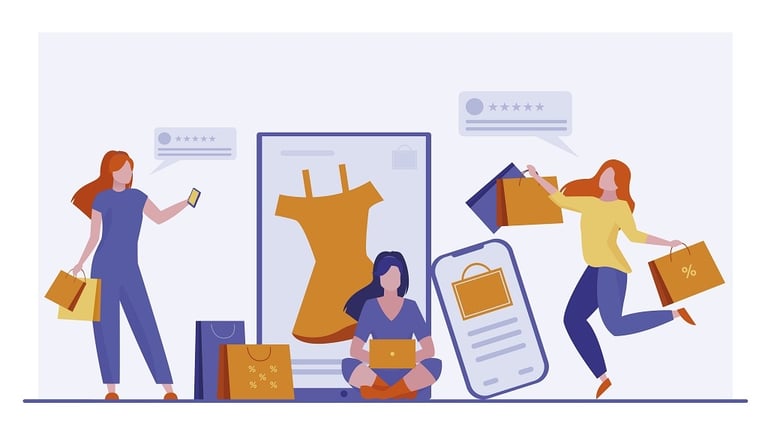
Known as repeat and regular customers, your loyal customers are those who keep coming back to your store. They are your most valuable source of revenue
A loyal customer is one that thinks of you first when a pain arises. They are customers who are likely to refer you to others, which makes them ideal brand ambassadors.
How to deal with loyal customers
There are many ways to retain customers and turn them into loyal fans. But what’s important is to keep loyal customers happy.
Personalization ranks high on the list of ways you can drive retention along with unique customer experiences.
If you’re a B2B company, feature loyal customers in your case studies and success stories.
If you’re not, ask them to leave testimonials and feature them on your social channels. Use your loyal customers as social proof to attract new and other types of customers.
Use their experiences and what made them loyal to your brand to attract new customers.
If you’re using a loyalty program, be sure to segment loyal customers and offer them additional perks and rewards.
Use customer segmentation tools, like Convertedin, to segment customers and uncover your loyal ones so you can target them with personalized ads and marketing messages.
More retail customer types you’ll see in your store
Now that we’ve covered the main 5 types of customers in retail, let’s go deeper by dividing them into customer types based on where they are in the sales funnel or buyer’s journey.
Remember: Your customer’s position in the buyer’s journey and their ‘next step’ will impact the way react to your brand.
For example, a customer who wanders into your store, while killing time or because something caught their eye, but feels that your sales people are pestering them, is unlikely to return.
If you’re an online store and your retargeting ads keep appearing over and over again, your customer will suffer from ad fatigue. They’re likely to ask Facebook – or any other social media platform – to stop showing your ads and they’re unlikely to visit you again.
Let’s examine more customer types across the following 4 categories:
- Before the purchase
- After the purchase
- Types of loyal customers
- Types of difficult customers
Types of retail customers: Before the purchase
These are customers who have not made a purchase just yet. And there several groups that fall under this category.
From casual wanderers to researchers to those looking to switch brands, these customers are primarily in the awareness stage and your brand needs to stand out and pull them in.
(1&2) We’ve already talked about bargain hunters and impulse customers and how to deal with each of them. Both of these customer types are part of the before-the-purchase or awareness stage.
3. Lookers and unsure customers
Lookers are customers who are just curious. They don’t have anything in mind that they want to buy so they’re just ‘wandering.’
Unsure customers may be looking for something but they’re not sure what it is.
Think of Andrew. Andrew is a customer who is looking to get a gift for his wife. He knows she likes fruit-scented perfumes, colorful gemstones, bags, shoes, and the occasional scarf.
But with some many options, he doesn’t know what to buy. So he visits various websites, adds many items to his wish list or cart, but isn’t ready to make a decision yet.
This makes him both a looker and an unsure customer.
How to deal with lookers and unsure customers
The best way to handle customers like Andrew is to ensure that you have a chatbot or live chat option available, along with good customer service.
Make sure your website is attractive and easy-to-navigate to entice lookers and give the unsure an incentive to keep exploring and find what they need.
In a physical store, be sure to offer help or recommendations but don’t hover around them.
4. Researchers
Researchers are customers who know what they want and who have done their research. They have compared your brand to the competition.
This type of customer is harder to handle because they won’t be swayed by a pretty-looking website or sizable discount. They’re more focused on benefits and value.
How to deal with researchers
Since researchers focus their decision on a number of things such as value, price, and product quality – just to name a few, you should focus on offering one more of these desirables up front.
Use social proof like testimonials or reviews to pull them in.
How many 5-star reviews did your natural lemon-scented hand cream get? Highlight that next to your product.

Did another customer leave a review saying something like “It’s my new favorite must-have!” or “I’ll be buying this again soon!” – Make sure you add those on your product page.
They’ll inform researchers that other people like your product and give them an incentive to try out this product themselves.
5. Looking-to-switch brands customers
These are customers who – for some reason – are looking to switch brands. Maybe their favorite brand is shutting down or has been inconsistent in prices or quality of service lately. Or maybe their great customer support isn’t what it used to be.
In other words, they are customers who are no longer satisfied with the service they are getting from your competition.
And they’re an excellent opportunity to grow your customer base and your revenues. You want to position yourself as their best alternative right now.
How to deal with customers looking to switch brands
First, you need to research your competitors and their offerings. Conduct a SWOT analysis to review their strengths and weaknesses and see what they are missing.
Then focus on filling the gaps. This means that you’ll need to show these ready-to-switch customers that you’re offering what your competitors aren’t. You have what they are missing and that makes you a better alternative.
Take a deeper look at your customers and your competitors’ customers and see what troubles them most. Make sure you stand out as the brand that solves this problem for them.
Does your competitor offer one-day shipping? Maybe you can make a similar offer with a small fee or have free speedy delivery within 2 days instead of 1. Or maybe you can have an annual shipping fee that means they don’t have to worry about shipping expenses for the entire year.
Further reading: 45+ E-commerce Vocabulary, Metrics and Biz Terms You Need to Know
Types of retail customers: After the purchase
Now let’s look at customers, what they are like, and how to handle them after they complete a purchase at your store.
Whether they’ve seen an online ad for you, were referred to you, or came to your website because of a special offer, these are customers who have bought a product from you. Now it’s time to focus on retaining them.
6. New customers
Your new customers are those who have completed their first purchase from your store. They’re not loyal yet. They’re just exploring what it’s like to buy from you.
How to deal with new customers
New customers are looking for guidance, support, and a helping hand. It’s an opportunity for you to make a lasting first, second, and third impression.
Is your customer support team fast and helpful? Are your return policies clear? Do they feel appreciated?
These are all means of retaining your new customers and establishing a relationship with them.
7. Active customers
An active customer is a current customer, one that uses your products or services but who isn’t entirely loyal just yet.
They may be buying from you because of convenience but if they see a better offering from a competitor, they may easily go to them.
Active customers aren’t necessarily looking-to-switch. They just haven’t established a relationship of loyalty. But they’re half-way – or quarter-of-the-way – there.
How to deal with active customers
The best way to handle active customers is to support and nurture them through great customer service and continuous customer engagement.
Focus on guiding your active customers through their buyer’s journey so that you can become their-go brand for their needs.
8. Unhappy customers
There are many reasons why a customer would become unhappy when dealing with a brand.
Generally speaking: something has gone wrong.
It could be that they recently received a shipment with a broken product or torn packaging. Or maybe they waited a week for an order that was supposed to arrive within two days. There are many reasons for customer unhappiness and dissatisfaction.
And as a store owner or marketing manager, it’s your job to find out what those reasons are.
Moreover, customers become unhappy when they feel that a brand is losing its reputation or if the level of service and quality provided are on the decline.
Suffering a series of problems or delays or money that’s not returned to their credit card are other reasons for unhappy customers. As is a special occasion that went awry.

Imagine how Sarah would feel when she buys a new bag for her mother’s birthday. But on that special day, her mother discovers the zipper is faulty and the inner lining ripped.
You can imagine Sarah’s embarrassment and how she’d suddenly become unhappy with the brand whose products she’s a fan of but that has disappointed her on her mother’s special day.
Now imagine if Sarah wasn’t a regular customer, but a new one. Chances are she’ll ask for a refund and won’t set foot – physically or virtually – in your store again.
How to handle unhappy customers
Unhappy customers need to be handled delicately. They haven’t abandoned you yet but something has ticked them off. Find out what that ‘something’ is and work on improving it.
If a customer receives a faulty product or ripped packaging, find out what happened and when. Is it related to your brand and business? Or is it due to a third party you’re dealing with?
The torn package could be the result of the shipping company mishandling your merchandise, which means you need to have a serious chat with them because they’re costing you business. Or the incident could have occurred while your employees were shipping it from your warehouse.
Find out the source of the unhappy customer’s complaint and work on fixing it. In the meantime, make sure you compensate them and invite them to shop with you again.
You can compensate them by offering them a special 10% or 15% discount on their next online purchase, add points to their digital wallet or rewards program (if applicable), send them an online voucher or something else.
Bonus tip: The best way to stay ahead with unhappy customers is to go through online negative reviews, customer support complaints, and lists where customers have opted out of your subscriptions or downgraded their plans.
It’s important that you handle unhappy customers fast. Because if you leave them unhappy they can tell others not to shop at your store, resulting in negative backlash or higher churn rates.
Remember: New customers will often read negative reviews first. Be sure to handle those early on and avoid losing business over a minor and easy-to-fix glitch.
9. At-risk customers
In a way, at-risk customers are similar to unhappy ones. But unlike them, at-risk customers may have already stopped shopping with your brand.
The reasons behind this can vary from becoming disinterested, getting bombarded by too many emails or going to your competitors. In some cases, customers simply get busy with their lives and focus less on brands.
How to deal with at-risk customers
First you need to identify who your at-risk customers are. To do that, look at customers who haven’t logged into your website for a long time, for example a month.
Create an email sequence to lure them back in or use retargeting ads to grab their attention. With the email sequence, you can ask them why they’ve abandoned you.
However, be sure to avoid bombarding them with messages and popups because if they were simply busy, they’ll definitely opt out of your communications and leave.
Building rapport through personal messages and emails can help you understand customer pain points better so you can position yourself as their go-to brand.
10. Lapsed customers
Lapsed customers aren’t just unhappy or at-risk, they’re past that. They’ve left!
But you can still attempt to get them back. You’ll need to be proactive and find out who these lapsed customers are before it’s too late.
How to deal with lapsed customers
While your customers may have left you, they are still familiar with you as opposed to trying out your competition.
This means you have an advantage over your competition but you have a small window of opportunity to use it.
Find out why those customers have lapsed. Why did they leave?
Did they complain about something – repeatedly – but no action was taken? Did they have to go through rigorous calls and emails to get a refund or return a product?
Uncover the reason why the left and fix it ASAP. Then let them know that you’ve resolved their problems, apologize for taking too long, and invite them back into your store.
11. Referral customers
Your referral customers are those who were referred to your store by one or more of your loyal customers. While they came to you based on a recommendation, it’s likely they’re not familiar with your brand and products.
Referral customers tend be wary and have high expectations so you need to handle them with care.
How to deal with referral customers
Whether you use a referral program or rely on word-of-mouth marketing, find ways to engage with referral customers and uncover their expectations and needs.
A bit like new and unsure customers, referral customers could use some guidance before they buy from you.
Further reading: 8 Customer Acquisition Metrics You Need to Start Tracking Today
Types of customers in retail: Loyal customers
So far we’ve covered a total of 11 types of customers in retail. Let’s look at two more categories, namely your loyal customers and the difficult customers.
You can divide your loyal customers into 4 main sub-categories: We’ve already handled ‘loyal customers’ as a type of retail customer, now let’s look at the other 3 sub-types:
12. Lifetime customers
Think of lifetime customers as loyal customers on steroids.
As their name suggests, these are customers who will stick to your brand for the long haul.
If you offer a subscription-based service or product, lifetime customers have taken your lifetime subscription.
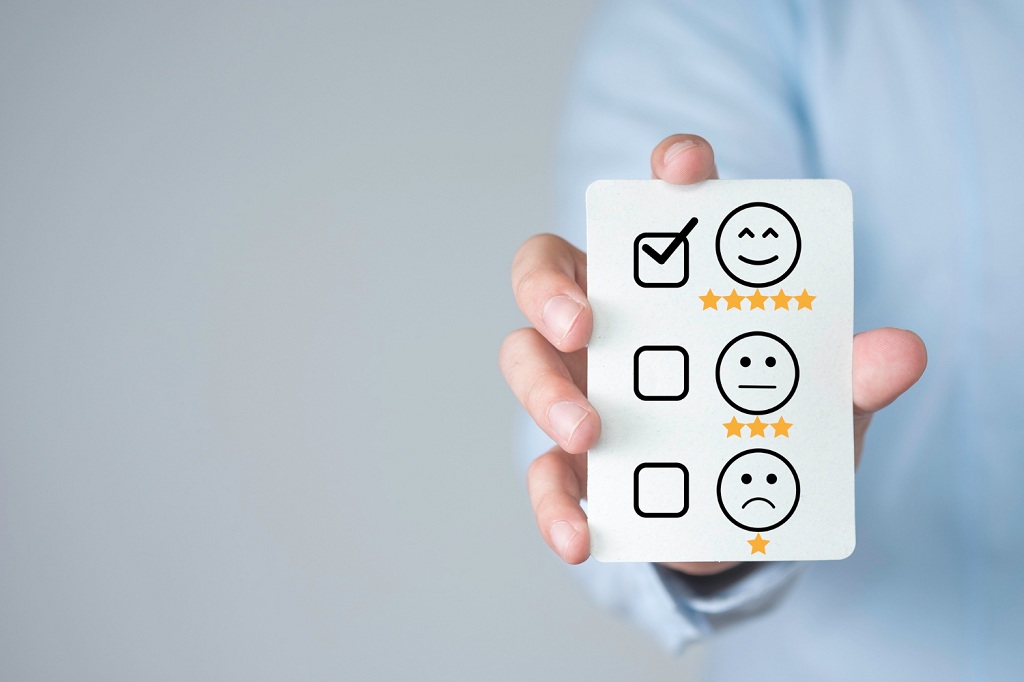
In e-commerce, an important business metric and KPI to measure is customer lifetime value (CLV or CLTV).
Customer lifetime value measures the value of the relationship a business has with a customer. Companies use CLV to see how much revenue they can generate from a customer during their business relationship with the brand.
How to deal with lifetime customers
You may be thinking that they are loyal and have even opted for a lifetime subscription with your business so you don’t need to worry about them. WRONG!
Never let a customer feel ignored or unappreciated!
Use these highly loyal customers as a means to grow your business. Enlist them in your community and referral program – if you have one. Ask them to refer you to others and reward them for their referrals.
Constantly provide them with value along with personalization and recognition.
13. Referring customers
A referring customer is one who is a fan of your brand to the point where they recommend you to others. They are loyal and they tell their friends and family positive things about you and the service you provide.
How to deal with referring customers
It’s best to first identify which of your customers are likely to refer you.
You can find that out by looking at your top-buyers or top-spenders and asking them for feedback.
Once they give you a five-star rating or a glowing review, ask them if they’re willing to refer you to others.
The best way to manage and keep up with referrals is by creating or subscribing to a referral program.
Use the referral program to provide incentives and rewards to referring customers and, in some cases, to referred customers too.
14. Advocate customers
Your advocate customers are a combination of loyal, lifetime, and referring customers. They tell people good things about you and are more or less doing free marketing for you.
They are also the most valuable segment of your loyal customers. And you don’t need to try hard to persuade them to refer others to you.
How to deal with advocate customers
Since advocate customers are your most prized customer segment, make sure they’re appreciated and well-taken care of.
To retain them, constantly show them that you appreciate what they do for you. Like lifetime customers, use them in your case studies and feature their testimonials on your homepage and social media platforms.
Give them priority when they reach out to your customer support team. Engage them with personalized messages and ads and offer them additional perks as part of a rewards or loyalty program.
15. Types of customers in retail: Difficult customers
Last but certainly not least are difficult customers. And there are several types of those too.
The important thing to remember when dealing with difficult customers is that you can’t please everyone. That said, you’ll still do your best to appease them but you won’t make a sale off every one of them.
Unhappy customers may become difficult customers if the issues that are bothering them persist.
The following types of customers fall under difficult-to-deal-with customers:
- Angry customers
- The bullies
- The constant-complainer
- The indecisive customer
- The impatient customer
- The one who knows everything
- The hard-to-please
Understand and identify your customers’ pain points
Why do customers buy products?
Aside from impulse and wandering customers who will make the occasional purchase, most customers are trying to fulfill a need.
They have a problem or pain and they need a product – your product or service – to eliminate that pain.
“Pain points are specific problems faced by current or prospective customers in the marketplace. Pain points include any problems the customer may experience along their journey.”
Gartner’s definition of pain points
As a retailer or business owner, it’s your job to understand your customers’ pain points and position yourself as their solution, as the brand that has their back.
With potential customers, show them how you fulfill their needs. With current customers, provide value, engagement, and personalization.
You want them to keep coming back to your store and avoid switching brands.
Types of customer segmentation
As you can see, there are many types of customers in retail and e-commerce.
There are customers who know you, some who don’t, some who may have heard of you, and some who are willing to give you a shot. And then there are customers you want retain and others you want to attract, acquire, and retain.
But how do you get around all of this? How can you divide them to learn more about them and target them with your ads?
The answer is through customer segmentation.
Customer segmentation is the process of dividing your customers based on certain criteria or attributes.
There are 4 types of customer segmentation. They are:
- Demographic segmentation, which divides customers based on age, gender, race, and religion.
- Behavioral segmentation is where you segment customers based on their behavior. This can include those who spend on a weekly basis or who buy certain products at the beginning of the month and so on.
- Geographical segmentation is dividing customers based on their location, such as city, town, country, or region.
- Psychographic segmentation is grouping customers based on the way they buy.
“While demographics show who your customers are, psychographics show how they buy, and geography indicates where they are, behavior is about what they do regularly.” - From How to Create a Customer Segmentation Strategy and Boost Sales
Customer Segmentation with Convertedin
Having seen that there are at least 15 types of customers or segments, you’re probably thinking: This is all well and good but how can I get all of this information? How can I target these customer segments?
This is where Convertedin comes in.
Convertedin is an ad automation software that helps e-commerce businesses segment their customers and target them with ads across social media and Google.
Using Convertedin, you can segment customers based on criteria you set or you can let the software segment your audience for you.
There are over 100 segments on Convertedin. You can segment customers based on their geographical location, behavior, age, or a combination of those criteria.
You can also group customers based on the types of products they buy.
Let’s say you sell cosmetics. You can segment your customers based on their favorite brands such as “L’Oreal buyers,” “Max Factor Fans,” and so on. Or based on the types of products they buy, like “Lipstick Lovers” and “Eye Shadowers” …etc.
You can then use those customer segments for personalized ad targeting and retargeting.
Let’s say you’re running a 25% end-of-season sale across several cosmetics lines. Use Convertedin to either target lookalike customers or retarget those who have clicked your ads or bought from you before.
As of the writing of this article, Convertedin supports ad formats for Facebook, Instagram, Snapchat, YouTube, and Google ads.
Convertedin is also available on Shopify, WooCommerce, OpenCart, Magento, and through custom APIs and Mobile SDKs.

Let’s wrap it up
Whether you’re an online or a physical retailer, or if you offer an omnichannel experience, there are many types of customers in the retail space that you need to be aware of.
You’ll want to keep track of your loyal customers because they’ll offer the highest value to your business.
Understanding your different customer segments, their pains, and how to handle them will help you grow your business faster.
And as you get used to the different types of retail customers that come to your store and how to deal with each of them, you’ll be able to identify your difficult customers and which of them aren’t worth wasting time, energy, and money over.
Moreover, training your staff to handle the different types of customers, whether online customer support or on-ground sales reps, will ensure smooth business operations and better customer experience and retention.
But learning about the different customer types isn’t enough. Segmenting your customers into categories based on their buying behavior and preferences will help you improve your ad targeting and your customer acquisition efforts.
Customer segmentation will also help you get the most out of your return on ad spend (ROAS) and reduce your average customer acquisition costs.
If you’d like to see Convertedin’s segmentation software in action, start your free trial today.
